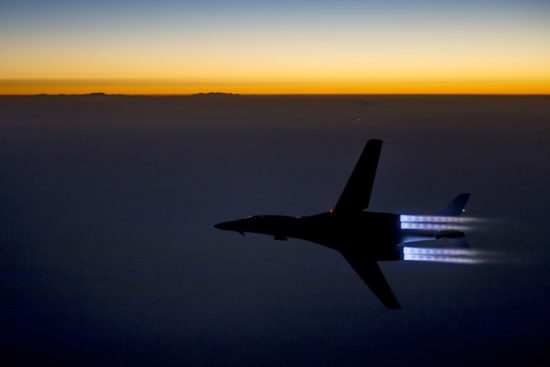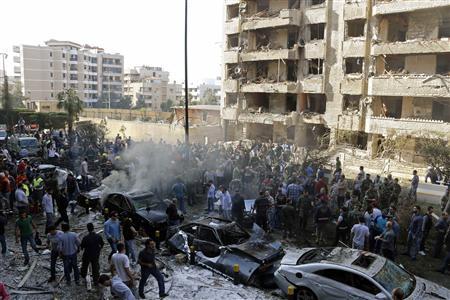What Did the Trump Administration Just Do in Syria?

[Published in The Atlantic.]
If the presence of such fighters in the area is confirmed, the airstrikes, and the likely military escalations to come elsewhere, may mark an end to a long period during which the United States avoided direct military clashes with Iran or Iranian-backed proxies. If U.S. troops are now engaging directly with Iranian militias, escalation in the absence of a well-wrought plan could inflame the conflict in Syria and further afield. On the other hand, for all Iran’s bluster, the Islamic Republic, a staunch ally of Syria, will have to re-calibrate its own expansionist ambitions in the Middle East if it encounters meaningful resistance from the United States after nearly a decade of only token or indirect opposition.
The stakes are high: Iran’s regional rivals have staked their hopes for a reversal of fortune on Trump’s willingness to embrace traditional Sunni allies and take military action against Assad, while Iran and its allies believe themselves on the verge of a total victory in Syria.
And while the strike may have been undertaken more in self-defense than as part of any shift in policy, the Trump administration has been actively seeking ways to repel Iran, canvassing the Pentagon as well as U.S. allies in the region for suggestions about where and how to draw lines against what it views as Iranian expansionism. American experts with experience in the region, and in the U.S. government, say they have been consulted about possible pressure points. In my conversations with senior Arab officials, they have shared their own proposals in detail. The strikes against Tanf may well suggest that America is moving out of the planning stage and into a period of military action intended to abate Iranian momentum.
So far, there are no indications that the Trump administration is doing any of the necessary groundwork to insure against blowback or out-of-control spiraling as America appears to turn from accommodation and containment to military force. The Obama administration pursued a cautious, conciliatory approach to Iran, avoiding any direct clashes in the belief that all other concerns were secondary to the nuclear negotiations, and that a relatively minor clash over Syria or Yemen could upend years of talks to freeze Iran’s nuclear program. In practice, the regime and its clients learned that they could behave as recklessly or maximally as they wanted in pursuit of their interests in the Middle East without fear of a robust U.S. response, even in places like Iraq. Obama administration officials say they believe this approach allowed them to win international support for the nuclear deal and to portray Iran, rather than the United States, as the problem party in the negotiations.
It’s just as likely that nuclear negotiations would have produced the same outcome even if the United States had pushed back against Iranian actions in Iraq, Syria, and Yemen, prior to the conclusion of the deal. But once the nuclear deal was concluded, Obama made a poor choice, joining forces with Saudi Arabia and the United Arab Emirates in an ill-planned campaign in Yemen that has hobbled the state, wantonly targeted civilians, opened new space for al-Qaeda, and strengthened, rather than reduced, Iranian influence over Yemen’s Houthi rebels. Meanwhile, he left Iran and its proxies a free hand in Iraq and Syria. The result today is a triumphalist Iran, whose allies and proxies can claim a dominant position in Iraq and Syria, and whose military and political rise was, in many instances, directly abetted by the United States.
The smartest bet (and the least likely one in a Trump White House) would avoid direct military clashes and instead use political pressure to marginalize Iranian proxies in Iraq, and military force against Iranian allies in Syria. It’s unrealistic to try to erase Iranian influence in the region, as the Arabian monarchs deluded themselves into believing they could do in Yemen. What is realistic is to deny the Iranians and their allies some of their goals, such as a swift victory over Syrian rebels in the south and southeast, while making other goals, like domination of Iraq and Syria, more costly.
Senior officials in the United Arab Emirates and Saudi Arabia (like most of their counterparts throughout the Middle East) have made no secret of their disdain for Obama, who they believe abandoned his traditional allies and, in general, neglected the turmoil that has engulfed the region. Now they are fully invested in Trump, a gamble that senior officials from the Gulf gleefully describe in private, and fully expect will pay off. They believe he will value the colossal support they give him by purchasing American arms and supporting global energy markets, and that in return, he will take their suggestions about how to manage regional security threats. The narrative they’re selling is seductively simple: The region faces a single destabilizing extremist threat, and the supposedly complex web of forces at play are really just different faces of the same phenomenon. Gulf envoys portray the Muslim Brotherhood, al-Qaeda, the Islamic State, and even Iran, as different brands and incarnations of the same violent extremism—a simplistic and simplifying approach that leads to terrible policy prescriptions, but which comfortably echoes Trump’s tendency to vilify Islam.
Therein lies the danger. An inattentive and reactive administration in Washington that has decided it’s high time to stop Iran might fumble for whatever opportunities present themselves. An amped war in Yemen after a high-priced lobbying campaign by Gulf allies? Why not. A one-off strike against Hezbollah, Iraqi-Shia paramilitaries, or some other Iranian ally in Syria, so long as there’s no risk of hitting Russians? Sure.
But what happens when Iran and its allies, inevitably, strike back? They’ve been in this game for decades, and they are masters at bedeviling U.S. goals and striking against U.S. interests using a web of proxies and allies that are often difficult to connect directly to Tehran. Furthermore, as spoilers, Iran’s side often needs only to make a splash, not necessarily to win outright.
The best way forward would entail a systematic and contained series of strikes against targets of opportunity—protecting civilians and U.S.-backed rebels when possible, continuing to strike jihadists while denying cheap successes for the Assad regime, and, above all, exacting a military cost for atrocities and war crimes. None of these moves will expel Iran from Syria or diminish its status as a dominant regional power—a status it earned over many long decades of hard work as a spoiler, ally, proxy-builder, and kingmaker. While the United States swung in and out of the region and the Sunni royal families fell victim to their own lack of capacity as states with weak institutions and mercurial governance, Iran stuck with its long game. Successfully standing up to it today means restoring balance and halting its forward momentum.
Washington can learn a bit from Iran’s playbook. If the United States plans its strategy right, it doesn’t have to beat Iran and its proxies—all it has to do to shift momentum is make it expensive for Iran (by destroying some of its troops or proxies) and for once make a credible show of using air power to defend American allies on the ground. It can also, with minimal resources, prevent Iran and Assad from reclaiming Syria’s south and southeast in a cakewalk.
The Trump administration’s military moves in Syria could signal the beginning a concerted effort against Iran. But given the its anti-Muslim record, impulsiveness, and general chaos, it’s just as likely that renewed U.S. attention to the Middle East will mean military intervention without a sound strategy—and will spawn a new generation of problems rather than the solving existing ones.
How much to worry in Lebanon, once more?
REUTERS PHOTO
After today’s bombing at the Iranian embassy in Beirut, how much should we worry that the war in Syria will engulf Lebanon? First, the usual caveat: I live here, and I have a vested interest Lebanon remaining viable and stable, so discount my analysis accordingly.
Nonetheless, nothing so far has changed my fundamental view that the major players in Lebanon want to preserve the existing order here, as combustible as it is. The attackers presumably come from the jihadist strain of the Syrian opposition; they have little invested in the Lebanese status quo and are willing to upend it. But the major actors with organizations in Lebanon, including the Sunnis who support the Syrian rebels, as well as the Hezbollah constituents who support the Syrian government, benefit from the truce in Lebanon. Beirut especially serves as a neutral area where all parties communicate with each other, raise funds, and do their political work.
Iran’s immediate accusation of Israel supports this view: if Iran wanted to raise tensions, it would point at jihadists or Lebanese factions allied with the Syrian opposition. Instead, it pointed at Israel (just like Hezbollah did after the Dahieh bombing in August), a convenient and unifying enemy. Blaming Israel is a calming gesture; even if Hezbollah and Iran suspect a local or Syrian Sunni network, it deflates tension to pin the attack on Israel. And if Iran genuinely has evidence or believes Israel is responsible, that’s all the better insofar as it minimizes the risk of hostilities taking root beyond Syria’s borders.
In coming weeks, we should watch the rhetoric of Hassan Nasrallah; if he repeats his previous positions on the Syrian war, as I expect, that will signify that Hezbollah maintains its interest in a calm Lebanon. We also should watch the retaliation; small attacks against centers of jihadist activity would remain with the limited framework that, again, minimizes the chance of escalation.
Today’s attack is certainly a worrisome development, since the apparent suicide bombers struck a diplomatic target. It will increase anxiety among all people in Lebanon, and will especially worry the civilians living in the Dahieh, who already suffered an indiscriminate attack in August that killed 20 people and wounded more than 100. These are not good things. But they don’t guarantee that war will engulf Lebanon either. For that to happen, the established parties here – in particular Hezbollah and the Future Movement – would have to radically change their cost-benefit analysis. So far, I don’t see that happening. Lebanon’s future holds more simmering violence, like the back and forth bombings, assassinations, and occasional skirmishes we’ve seen so far in the Bekaa, Tripoli and Beirut; but not, I expect, outright conflict.


